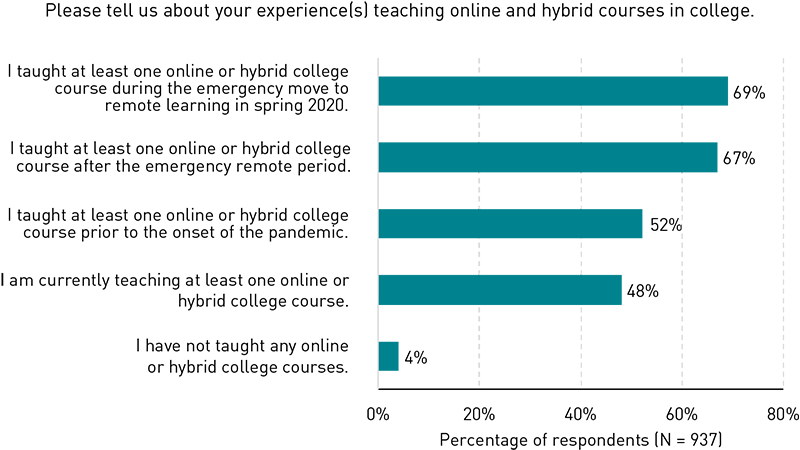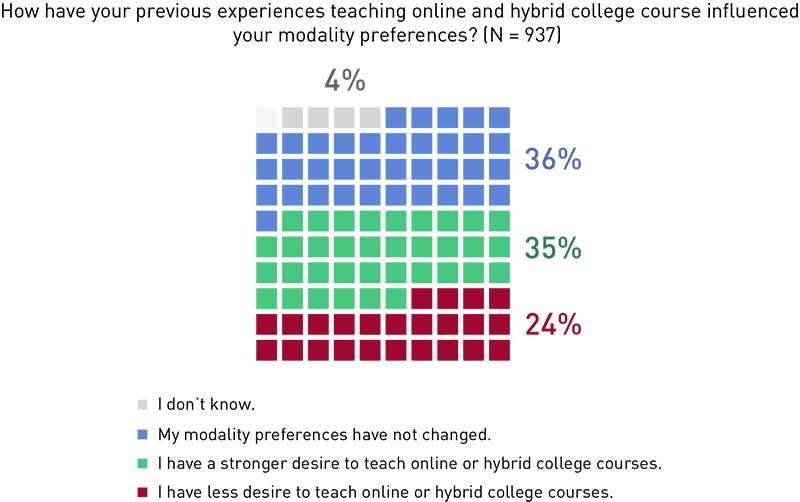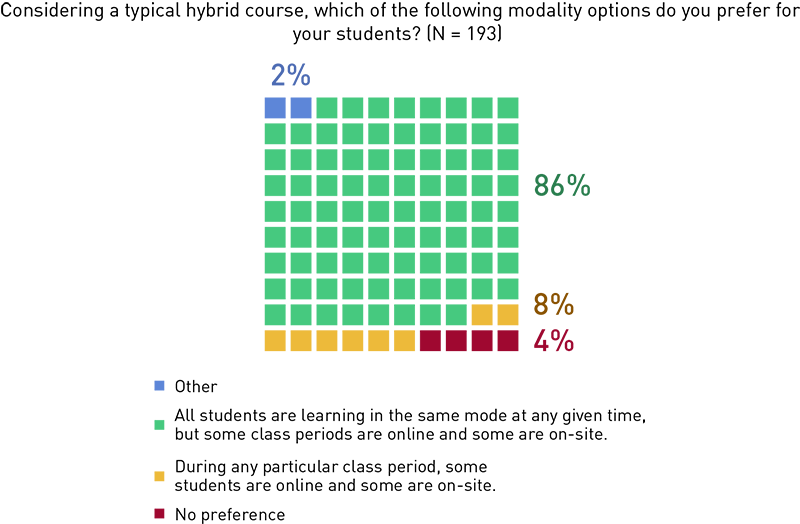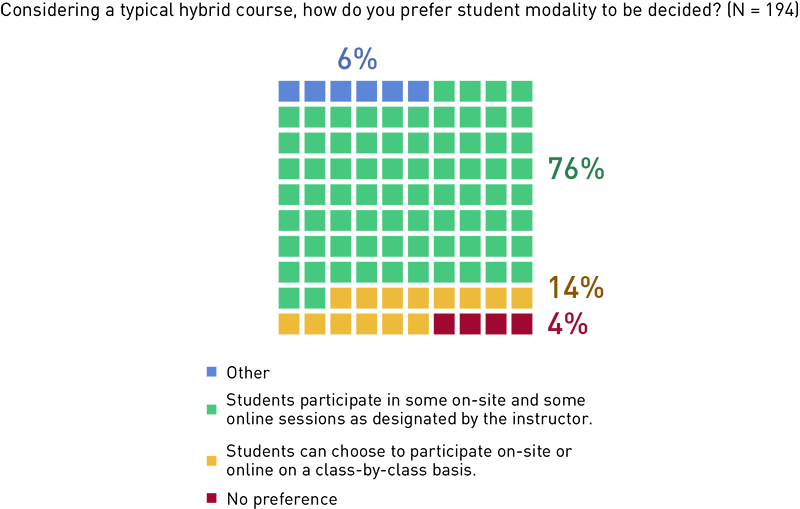Online and Hybrid Teaching
Most faculty have experience teaching online and hybrid courses. We asked faculty about their experiences teaching online and hybrid courses before, during, and following the pandemic. Most notably, only a small percentage indicated that they have never taught an online or hybrid course (4%) (see figure 10). A majority taught at least one online or hybrid course during (69%), in the two years after (67%), or prior to the onset of the pandemic (52%). Interestingly, now well out of the emergency remote learning period, close to half (48%) reported that they are currently teaching at least one online or hybrid course, illustrating the ongoing need and demand for online and hybrid courses despite many colleges returning to "normal" operations.

We also asked faculty how their prior experiences teaching online or hybrid courses influenced their current modality preferences (see figure 11). For the most part, respondents were split between no change and an increase, with slightly fewer faculty saying their desire to teach online or hybrid courses has decreased. Interestingly, when breaking down the findings by modality preference and prior experiences, there were no significant differences.

Faculty want their students to learn simultaneously in the same mode. We asked faculty who prefer to teach hybrid courses about their preferences for student modality. A majority (86%) said that for a typical hybrid course, although some classes are on-site and some are online, they prefer their students to learn in the same mode at any given time (see figure 12). Further, most (76%) said that they prefer to decide which class sessions are on-site versus online, as opposed to letting students decide whether they learn on-site or online (see figure 13). It is important to note that student choice is most commonly associated with HyFlex learning, whereas hybrid courses may not allow for either faculty or student choice when it comes to modality—that is, institutions, programs, and/or departments might have specific requirements for hybrid course schedules and modality designations (e.g., a department could require that a particular course conducted on Tuesdays and Thursdays follow a schedule in which Tuesday class sessions are on-site and Thursday class sessions are online). Although it was shown in the previous section that faculty do value flexibility for their students, these findings suggest that there may be a limit to how much flexibility they prefer to offer students.

